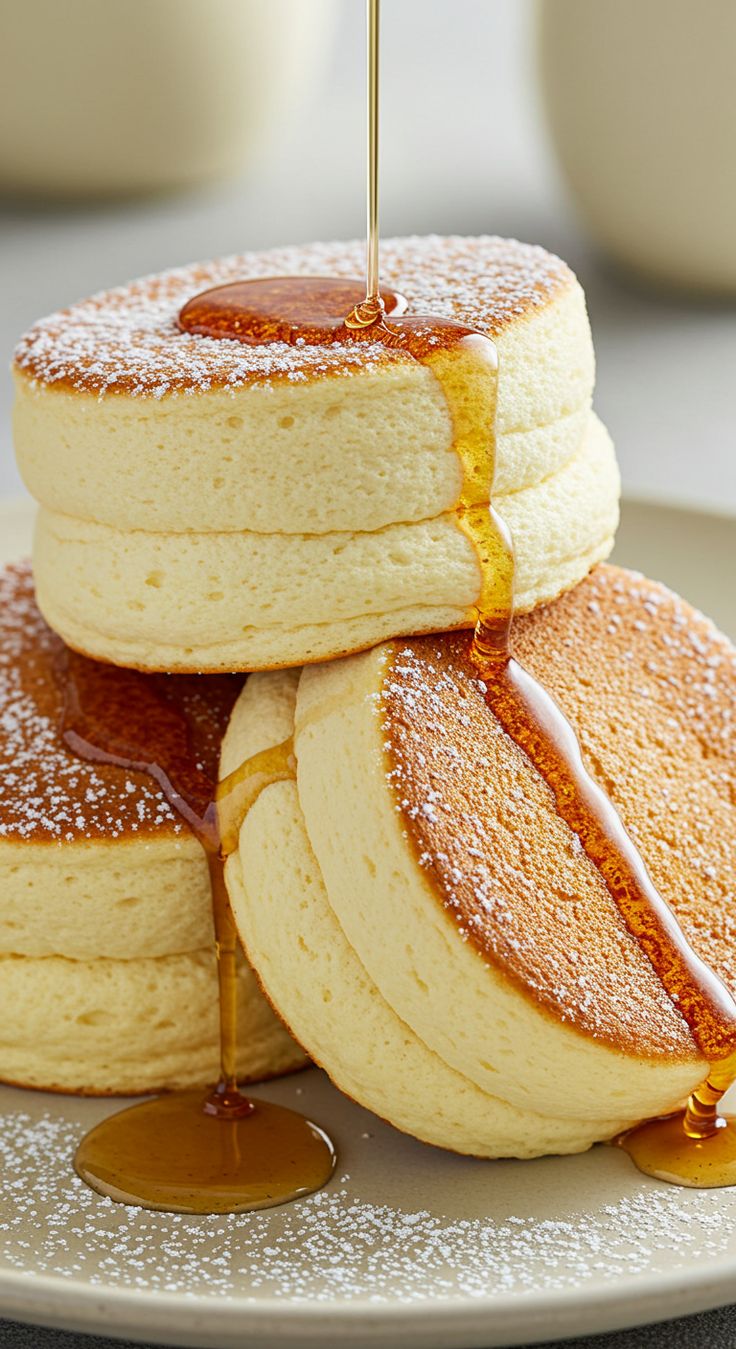Whether you’re craving a cozy Sunday breakfast, planning a brunch for friends, or just want to master the art of the perfect pancake, this comprehensive guide will walk you through everything you need to know—from ingredients and techniques to global variations, troubleshooting, and storage tips.

Table of Contents
- Introduction
- The History of Pancakes
- Ingredients: Choosing the Best for Fluffy Results
- Step-by-Step Recipe for Classic Pancakes
- Techniques for Perfect Pancakes
- Flavor Variations and Add-ins
- Global Pancake Styles
- Toppings Galore
- Healthier Pancake Alternatives
- Vegan and Gluten-Free Options
- Storing and Reheating Pancakes
- Frequently Asked Questions
- Final Thoughts
1. Introduction
Pancakes are a universally loved breakfast dish—soft, golden, and dripping with butter or syrup. But mastering pancakes at home means more than just mixing batter. It’s about understanding textures, temperatures, and techniques that transform a basic mix into morning magic.

2. The History of Pancakes
Pancakes date back thousands of years, with versions found in nearly every culture. Archaeological findings suggest even Ötzi the Iceman, from over 5,000 years ago, consumed something resembling pancakes.
From French crêpes to Ethiopian injera, to Russian blinis and American-style flapjacks, pancakes have been a global comfort food staple. Their enduring popularity speaks to their simplicity and adaptability.
3. Ingredients: Choosing the Best for Fluffy Results
Core Ingredients
- Flour: All-purpose works best, though whole wheat can be used for added nutrition.
- Eggs: Provide structure and richness.
- Milk: Whole milk adds creaminess, but non-dairy options also work well.
- Butter: Melted butter adds moisture and flavor.
- Baking Powder: The key leavening agent.
- Sugar: Just enough for sweetness.
- Salt: Balances flavors.
Optional Boosters:
- Vanilla extract
- Cinnamon or nutmeg
- Greek yogurt or sour cream (for fluffier texture)
4. Step-by-Step Recipe for Classic Pancakes
Ingredients (Serves 4):
- 2 cups all-purpose flour
- 2 tablespoons sugar
- 1 tablespoon baking powder
- ½ teaspoon salt
- 2 eggs
- 1¾ cups milk
- ¼ cup unsalted butter, melted
- 1 teaspoon vanilla extract
Instructions:
- Mix Dry Ingredients: In a large bowl, whisk flour, sugar, baking powder, and salt.
- Mix Wet Ingredients: In another bowl, whisk eggs, milk, melted butter, and vanilla.
- Combine: Pour wet into dry ingredients and stir until just combined (a few lumps are fine).
- Rest the Batter: Let it rest for 5–10 minutes.
- Cook: Heat a non-stick skillet or griddle over medium heat. Lightly grease with butter or oil. Pour ¼ cup batter per pancake. Cook 2–3 minutes per side.
- Serve: Top with butter, syrup, or fresh fruit.
5. Techniques for Perfect Pancakes
- Don’t overmix the batter—it will make pancakes tough.
- Letting the batter rest allows gluten to relax and baking powder to activate.
- Use medium heat; too hot and they’ll burn outside while remaining raw inside.
- Flip only once—when you see bubbles on the surface and edges look set.
6. Flavor Variations and Add-ins
- Blueberry pancakes: Fold in ½ cup of fresh or frozen blueberries.
- Chocolate chip pancakes: Add mini chocolate chips for a kid-friendly treat.
- Banana pancakes: Mash one ripe banana into the wet ingredients.
- Pumpkin spice: Replace ½ cup milk with pumpkin puree and add cinnamon, nutmeg, and ginger.
7. Global Pancake Styles
- French Crêpes: Thin and delicate, often filled with jam or Nutella.
- Dutch Baby: Oven-baked pancake that puffs up dramatically.
- Japanese Soufflé Pancakes: Tall, jiggly, and incredibly airy.
- Scotch Pancakes: Smaller and denser, often served with butter and jam.
- Ethiopian Injera: Made with fermented teff flour, served with stews.
- Russian Blinis: Yeasted pancakes, sometimes with buckwheat, served with caviar or sour cream.
8. Toppings Galore
- Classic: Butter and maple syrup
- Fruity: Strawberries, bananas, blueberries
- Nutty: Almond butter, chopped pecans
- Sweet & Salty: Bacon and syrup
- Savory Options: Eggs, cheese, avocado
9. Healthier Pancake Alternatives
- Whole wheat pancakes
- Oat flour pancakes
- Low-sugar or sugar-free variations
- Adding chia or flax seeds for fiber
10. Vegan and Gluten-Free Options
Vegan Pancakes:
- Substitute eggs with flaxseed meal (1 tbsp flax + 3 tbsp water = 1 egg).
- Use almond or oat milk.
- Replace butter with coconut oil.
Gluten-Free Pancakes:
- Use gluten-free all-purpose flour or almond flour.
- Add a binding agent like xanthan gum if necessary.
11. Storing and Reheating Pancakes
Refrigerate:
Store in an airtight container for up to 3 days.
Freeze:
Place parchment between pancakes and freeze in a sealed bag for up to 2 months.
Reheat:
Use toaster, skillet, or microwave.
12. Frequently Asked Questions
Q: Why are my pancakes flat?
A: Check your baking powder’s freshness and avoid overmixing.
Q: Can I make batter ahead of time?
A: Yes, but don’t add baking powder until ready to cook.
Q: Why are my pancakes raw inside?
A: Heat may be too high—lower it and extend cook time.
13. Final Thoughts
Homemade pancakes are more than just breakfast—they’re a ritual. Whether you’re flipping them on a quiet Sunday or whipping up a batch for a crowd, knowing the basics—and a few pro tricks—can elevate your pancakes from average to unforgettable.
Experiment with different flours, toppings, and flavors. Pair with fresh juice or coffee. Most importantly—make them your own. Because the best pancakes aren’t just made in a pan. They’re made with care.
